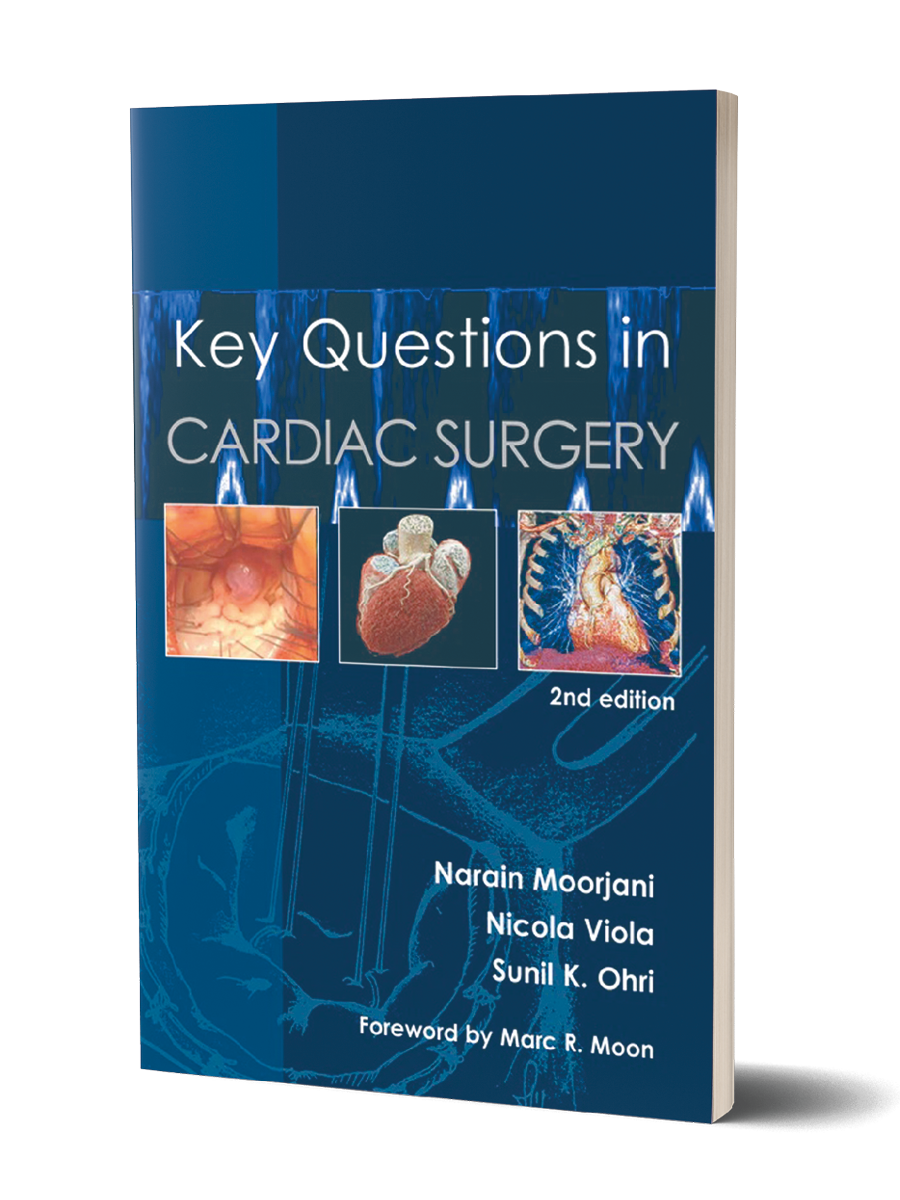Book review
Amuch-anticipated revision of the first edition, this book is part of the Key Questions trilogy, which also includes thoracic surgery and congenital surgery. It has formed a cornerstone for those preparing for the FRCS CTh.
In my humble opinion, the first edition was probably the greatest book to ever have been written on the subject of adult cardiac surgery: concise, accurate, accessible, up to date and relevant. It is precisely the antidote for the massive tomes of Edmonds or Kirklin, both of which are great reference books, but better used as laptop stands for those in training and preparing for the FRCS.
What can we expect from this new edition? It’s bigger and better. Now 664 pages long, every ounce of this is pure gold. There are new chapters on pulmonary embolus and statistics, but updates throughout the book are in line with updated guidelines and progressive surgical techniques.

The chapter on statistics is fabulous. Don’t bother with the recommended reading, as it explains the subject in an easy-to-understand manner with everything you would ever need to know. From basic statistical descriptors of histograms and bar charts to no-inferiority study design, it takes you through the subject in a logical and understandable perspective accessible to all trainees with a full-time job preparing for the exams – as does the rest of the book.
“The second edition has moved with the times, with greater detail”
All chapters have been comprehensively updated to align with the latest guidelines and techniques. An example is the chapter on heart failure. The first edition had solid guidance on principles of heart failure and surgery for heart failure, including novel and cutting-edge techniques, explaining everything from first principles. The second edition has moved with the times, with greater detail on mechanical circulatory support, including principles of extracorporeal membrane oxygenation (ECMO) and practical advice on more recent circulatory support devices, such as the Impella.
Pulmonary embolus (PE) is also a welcome addition to the book, providing the information required to assess and treat the rare but possible call about surgical embolectomy for acute PE.
An omission is Pulmonary thromboembolectomy (PTE), but given it is performed in only a few centres, this seems appropriate for what to my mind is the focus of this book: these are key questions. For a year-one consultant, and beyond, this is the perfect book for preparing for the FRCS. And for me, post-FRCS, it was a pure delight to read. My only wish is that such a textbook had been around when I was a trainee.
Neil Cartwright
Consultant Cardiothoracic Surgeon, Northern General Hospital, Sheffield

Key Questions in Cardiac Surgery
Narain Moorjani, Nicola Viola, Sunil K Ohri
£79.99 (TFM Publishing)

